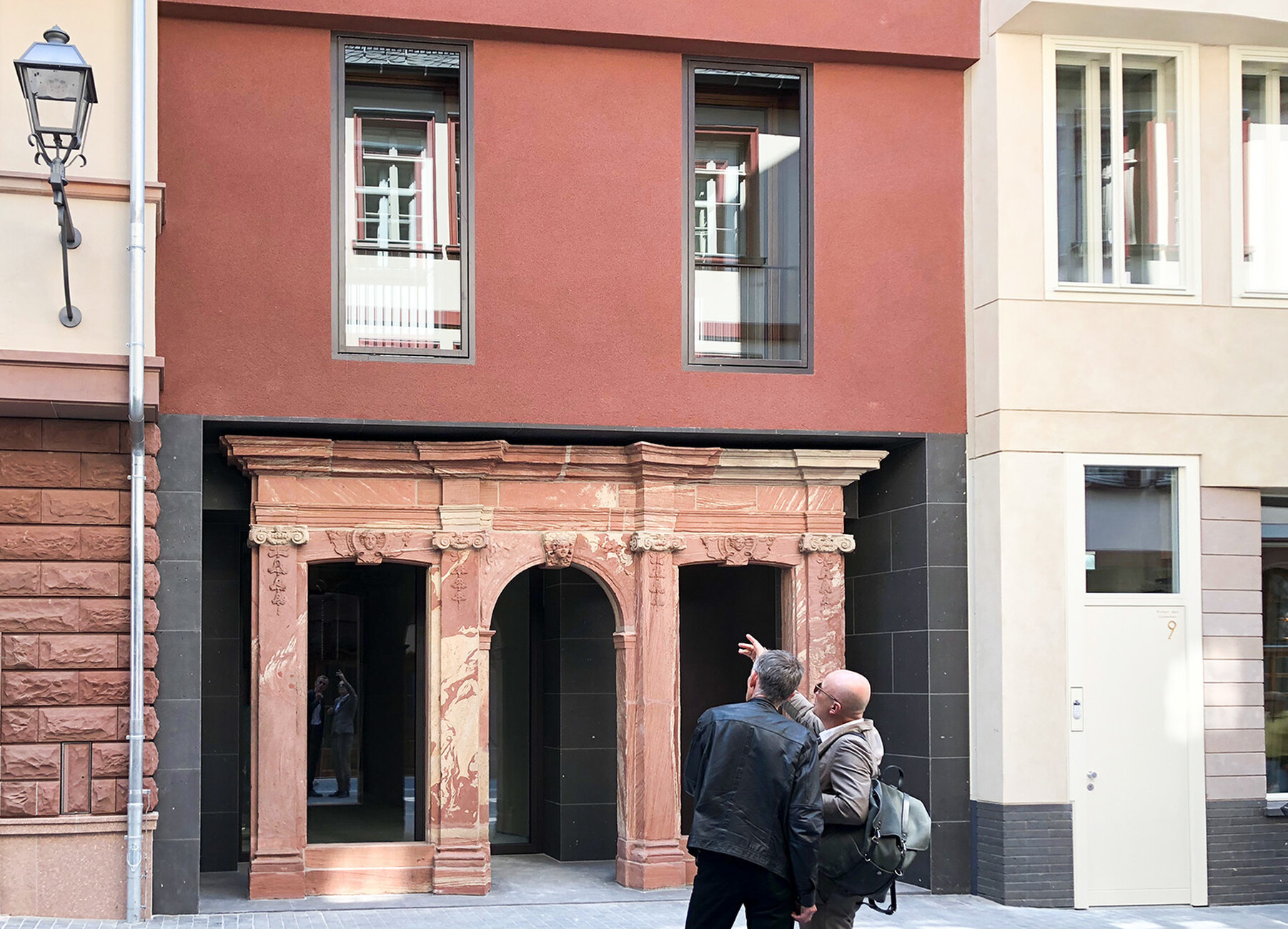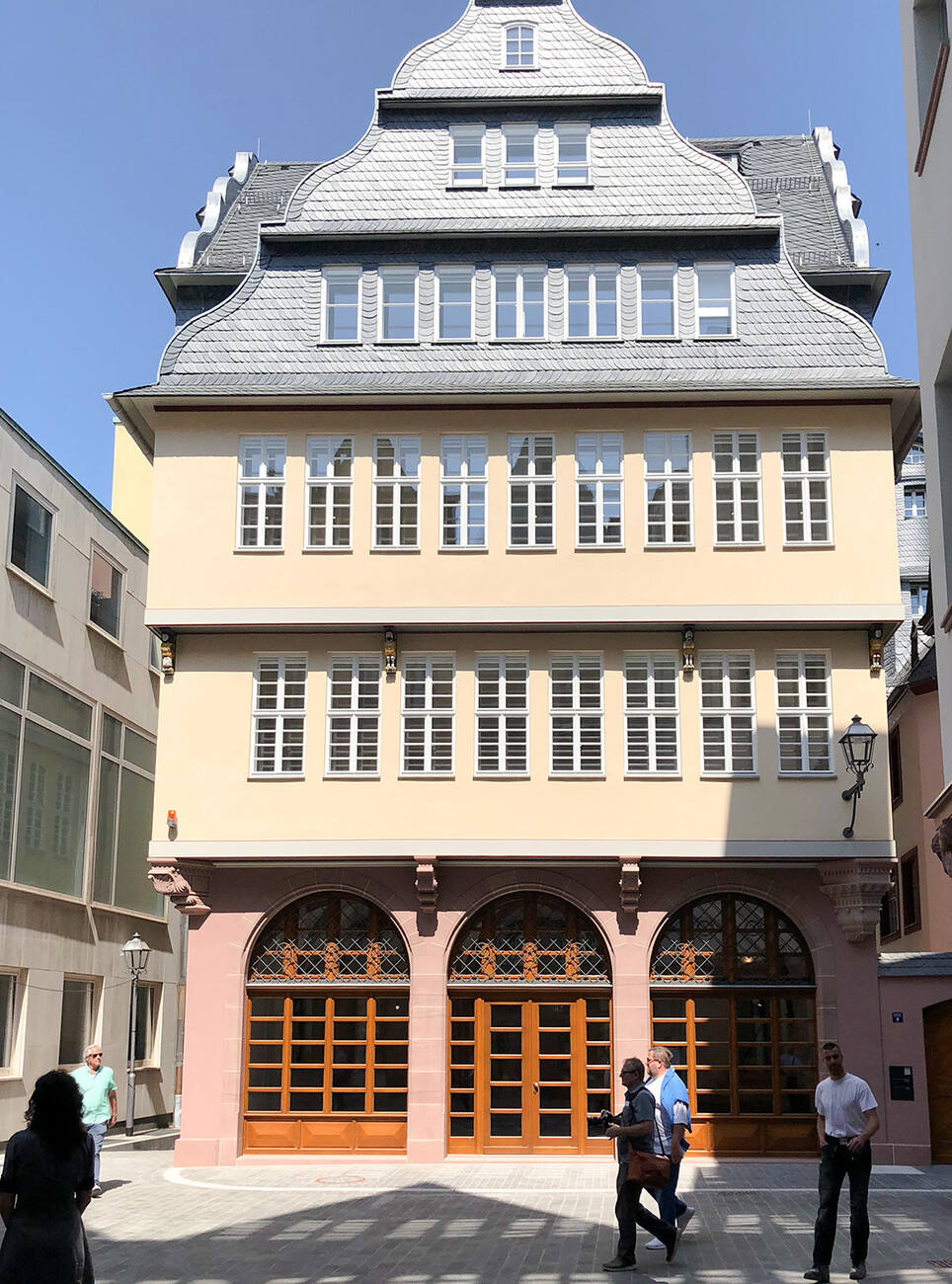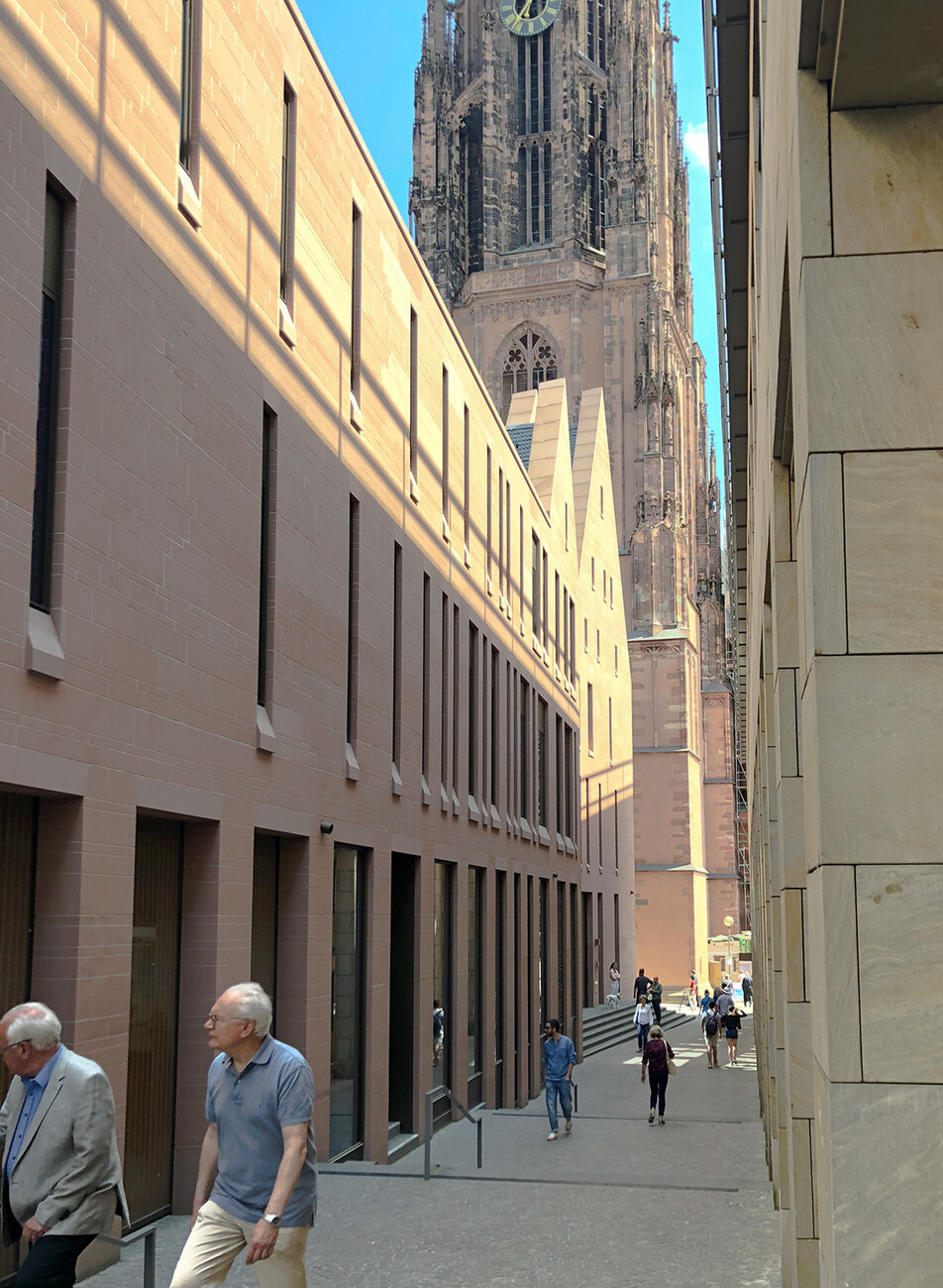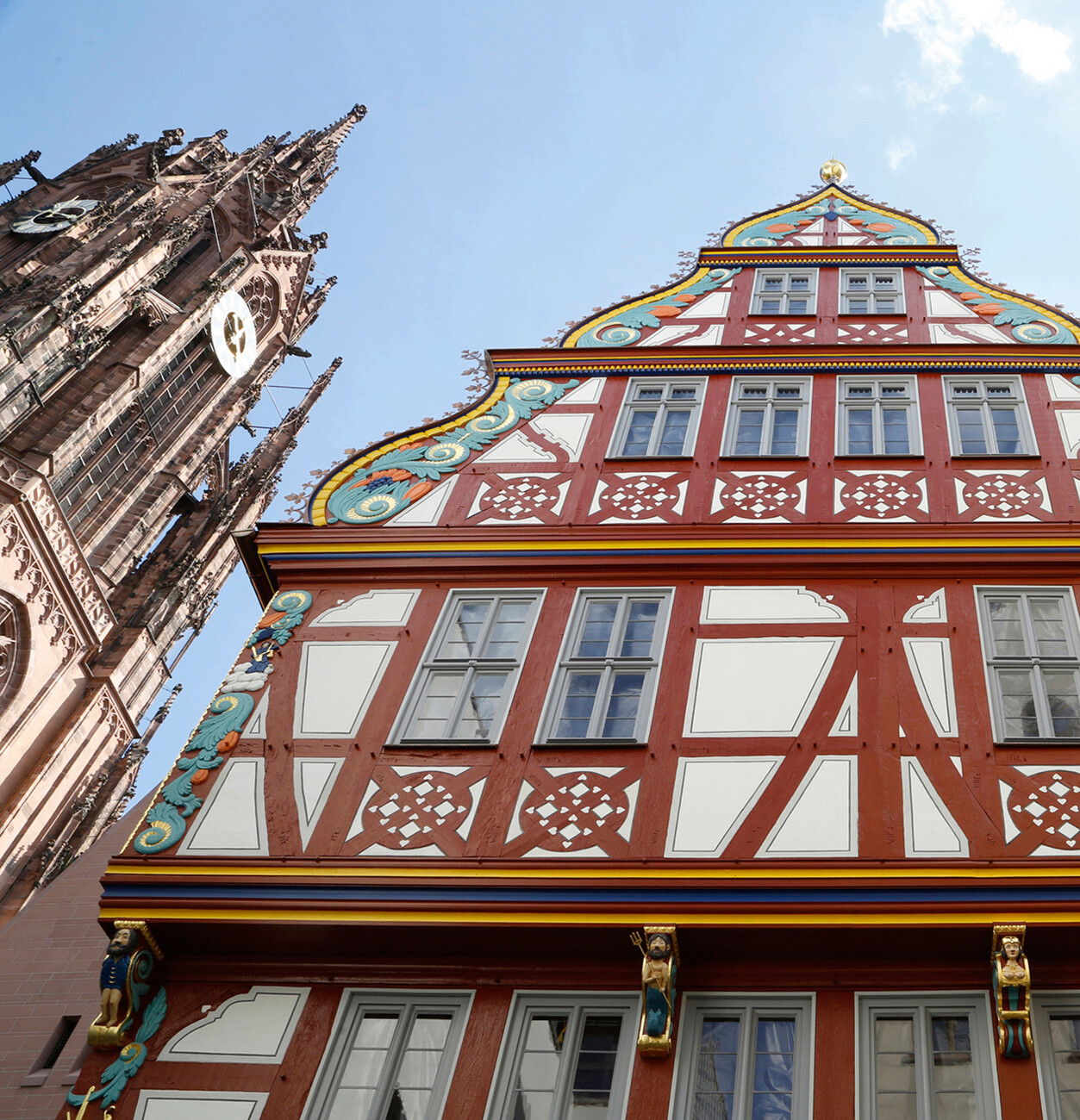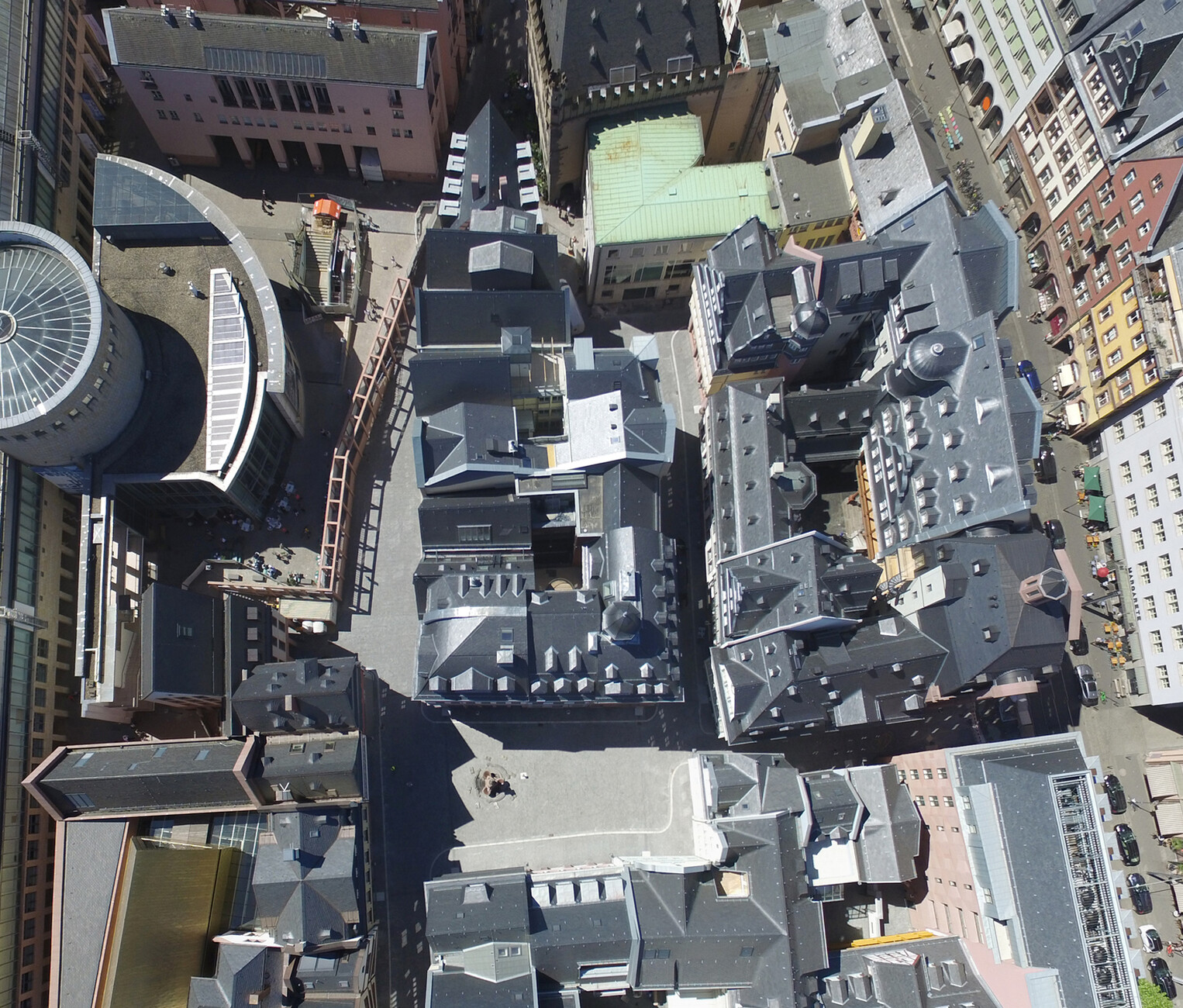Help in reading history
So there it is, Frankfurt’s new small urban quarter: pedestrianized, a mixture of small retail stores, residential properties and cultural use offering a direct link to the public transport system. Several new public spaces have been created attractive enough to entice people to linger and the materials employed also seem on the whole to be of a high quality. There is much to be entered on the credit side of the record, which is lacking in many other inner-city development projects. Yet it continues to polarize not only local residents, but also large sections of the newspapers’ cultural pages. In addition to the accusations of historical misrepresentation and “Disneylandization,” more recently some people have identified some of the project initiators as belonging to the political right wing and argue that many reconstruction initiatives served as a rallying point for nationalist and ultra-conservative forces. However, it would seem doubtful that such marginalized groups should be capable of finding majorities for such construction projects. If anything they discredit them. The partial reconstruction of Frankfurt’s Old Town was supported by a broad political and civic majority, as was reflected in the large crowds and reactions of visitors in the first few days. Reading some of the critical comments you cannot help but wonder whether the intention was to open up old fronts again – perhaps precisely because of the anticipated success of the “new Old Town”: excellent modern architecture on the left, evil historicism on the right.
Yet the model of living and working in mixed-use, car-free quarters has characterized the concepts of good urban planning since the 1970s. It was for precisely such a form of living that people campaigned and occupied the old Gründerzeit houses in Frankfurt’s affluent Westend district and elsewhere: They fought against the settlement policies that promoted implementation of the concepts of CIAM modernism, which demanded the clear separation of living and working areas. And they fought against the ideal of a car-oriented city offset by a small house in the Taunus hills. Naturally, the claim of historical misrepresentation cannot be dismissed entirely. And naturally the newly constructed buildings can only provide a sense of those that preceded them; they are representatives. But can they not for the most part achieve what the original buildings would have? We are not talking of functionalities here (in this sense the new buildings are doubtless superior to their predecessors), but rather their value as providers of information and facilitators of the city’s readability. After all, now it is once again possible to read the course of development over the centuries of one of the most important metropolises in the Holy Roman Empire. The central thoroughfare of the medieval city, the historical coronation path between City Hall and the so-called Imperial Cathedral of St. Bartholomew, has been regained. With the Hühnermarkt square, Frankfurt has also regained an intimate space that forms a counterpart to the village-green character of the Römerberg.
Even though the representative buildings of the historical originals are brand new, they will nonetheless immensely enhance people’s ability to perceive and experience the historical city. And it would not be surprising if they come to represent a locational advantage. A prime example of the attractiveness of an Old Town reconstructed on a large scale is Münster, where following devastating destruction in World War II the owners and businesspeople succeeded in pushing through a reconstruction of the Prinzipalmarkt and surrounding areas that is partly accurate and partly an interpretation – also at the time against the protest and mockery of progressive forces who argued that the reconstruction was an example of historical forgetfulness and provinciality. Yet it has long proven to be a stroke of luck for the city. There are unlikely to be many towns that suffered comparable damage and now have such a sense of pride in their Old Town. Thanks to its attractive cityscape, Münster attracts many shopping tourists from the Ruhr region, whose city centers have been rebuilt in a far more pragmatic fashion.
Of course, the foreseeable success of the “new Old Town” should not be seen as a license for investor projects that seek to revamp poor architecture with kitschy historicizing façades. And while it is justifiable to feel delighted at having regained the Old Town, one key aspect should not be forgotten, namely that the protection of what is in Frankfurt often high-quality post-War architecture deserves equal attention and the same investment of effort as the reconstruction project. Which is why initiatives like the “SOS Brutalism” exhibition at Deutsches Architekturmuseum are highly important. In addition, care must be taken that the increasingly jeopardized postmodern architecture, of which Frankfurt boasts outstanding examples, is largely preserved. First losses have already occurred here. But perhaps the “new Old Town” can also help people realize how painful and dramatic such losses can be for a city’s cultural legacy.





